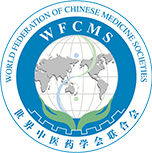Effects of acupuncture at Tianshu (ST25) and Shangjuxu (ST37) on the intestinal mucosa and metabolites of local skin tissues at Tianshu (ST25) in 2,4,6-Trinitrobenzene sulfonic acid and ethanol-induced rats
Release time: Aug 29,2023
Reading volume: 674
Objective: To observe the effect of acupuncture on local skin tissue metabolites of Tianshu (ST25) in rats with Crohn's disease (CD) using metabolomics and to explore the mechanism of acupuncture treatment metabolites and pathway on local skin tissue of Tianshu (ST25).
Materials and Methods: Thirty-eight Sprague − Dawley rats were randomly assigned to a normal group (n = 14) and a CD modeling group (n = 24). Rats in the CD modeling group were administered with 2,4,6-trinitrobenzene sulfonic acid and ethanol enema, in addition to the normal group. Four normal rats and four CD modeling rats were selected at random after model identification was established. Furthermore, CD modeling group rats were randomly assigned to two groups of 10 rats: the model group and acupuncture group. Rats in the acupuncture group underwent acupuncture of Tianshu (ST25) and Shangjuxu (ST37) for 7 days. After the intervention, the colon tissue was collected from each group of rats and the pathological changes were observed through hematoxylin and eosin (HE) staining. The local skin tissues at Tianshu (ST25) of the rats in each group were taken, and the proton nuclear magnetic resonance technique was used to detect the metabonomics of the local skin tissues of Tianshu (ST25) in rats.
Results: Compared with the normal group, the following were observed in the model group after HE staining: irregular colon morphology and other pathological changes such as intestinal mucosal hyperemia, edema, ulcers, polyps, and inflammatory cell infiltration. In the acupuncture group, colon tissue structure was relatively complete and layered, the colon gland structure was restored, and inflammatory cell infiltration was significantly improved. The choline, glycerin, glycine, guanidoacetic acid, and proline levels were significantly higher in the model group than in the normal group (P < 0.05 or P < 0.01). Compared with the model group, the acupuncture group had significantly increased contents of alanine, leucine, L-phenylalanine, and tyrosine in the skin (P < 0.05 or P < 0.01). Valine, leucine, and L-isoleucine biosynthesis and L-phenylalanine metabolism were the main metabolic pathways involved in the changes in the local skin tissues of the rats in each group, biosynthesis of tyrosine, and tryptophan.
Conclusion: The change in the metabolites in the local area of Tianshu (ST25) may be related to intestinal disease. The acupuncture of Tianshu (ST25) can improve intestinal inflammatory reaction in rats with CD, and this finding may be related to the regulation of amino acid metabolites and their pathways in the local acupoint tissues of Tianshu (ST25) by acupuncture.
Materials and Methods: Thirty-eight Sprague − Dawley rats were randomly assigned to a normal group (n = 14) and a CD modeling group (n = 24). Rats in the CD modeling group were administered with 2,4,6-trinitrobenzene sulfonic acid and ethanol enema, in addition to the normal group. Four normal rats and four CD modeling rats were selected at random after model identification was established. Furthermore, CD modeling group rats were randomly assigned to two groups of 10 rats: the model group and acupuncture group. Rats in the acupuncture group underwent acupuncture of Tianshu (ST25) and Shangjuxu (ST37) for 7 days. After the intervention, the colon tissue was collected from each group of rats and the pathological changes were observed through hematoxylin and eosin (HE) staining. The local skin tissues at Tianshu (ST25) of the rats in each group were taken, and the proton nuclear magnetic resonance technique was used to detect the metabonomics of the local skin tissues of Tianshu (ST25) in rats.
Results: Compared with the normal group, the following were observed in the model group after HE staining: irregular colon morphology and other pathological changes such as intestinal mucosal hyperemia, edema, ulcers, polyps, and inflammatory cell infiltration. In the acupuncture group, colon tissue structure was relatively complete and layered, the colon gland structure was restored, and inflammatory cell infiltration was significantly improved. The choline, glycerin, glycine, guanidoacetic acid, and proline levels were significantly higher in the model group than in the normal group (P < 0.05 or P < 0.01). Compared with the model group, the acupuncture group had significantly increased contents of alanine, leucine, L-phenylalanine, and tyrosine in the skin (P < 0.05 or P < 0.01). Valine, leucine, and L-isoleucine biosynthesis and L-phenylalanine metabolism were the main metabolic pathways involved in the changes in the local skin tissues of the rats in each group, biosynthesis of tyrosine, and tryptophan.
Conclusion: The change in the metabolites in the local area of Tianshu (ST25) may be related to intestinal disease. The acupuncture of Tianshu (ST25) can improve intestinal inflammatory reaction in rats with CD, and this finding may be related to the regulation of amino acid metabolites and their pathways in the local acupoint tissues of Tianshu (ST25) by acupuncture.

